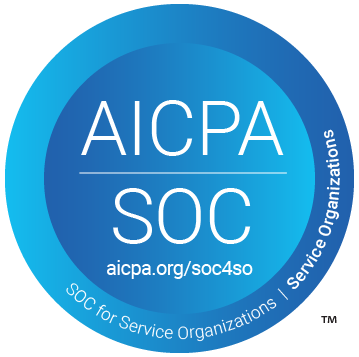There are two questions everyone in your organization, and each department, will need to answer after taking inventory of the company’s entire tech stack:
- Are employees taking FULL advantage of all the tools they have access to? If not, why?
- Is each department taking FULL advantage of all the tools they have access to? If not, why?
These questions may seem redundant but remember: Departments may have distinct tech stacks from one another. The technical needs of your sales team may not be the same as the technical needs of your customer service department. (Although sometimes, they might be! For example, if you’re paying for two different programs; one for Customer Service and one for Sales that BOTH feature Mass Email capabilities like Cirrus Insight offers, you can cut the other program.)
Taking an inventory of your full tech stack and then asking employees and departments to answer these questions is the first step in shrinking your tech stack and making your employees more productive. %20(2).jpeg?width=830&height=474&name=Elements-for-Webinar-event-20232%20(1)%20(2).jpeg) The best way to begin this process is through informal customer surveys, sent to internal users. Ones where teams and individuals are given a chance to respond anonymously. In order to maximize the odds of everyone participating, it’ll be important to communicate:
The best way to begin this process is through informal customer surveys, sent to internal users. Ones where teams and individuals are given a chance to respond anonymously. In order to maximize the odds of everyone participating, it’ll be important to communicate:
- WHY you are conducting this survey
- What you plan to do with the data collected
- And how that information will be shared (if at all) because of the promised anonymity of the survey.
It’s also important to remember that surveys should never be more than five questions to ensure people don’t lose interest as they fill them out.
To give you an example, here at Cirrus Insight, we like to ask the following questions to our departments concerning their tech utilization:
- How often do you use the tools that are available to you?
- Are there any tools that you are not currently using that you think would be beneficial for your work?
- Do you feel that there are tools that are redundant or overlapping with each other?
- What are some gaps in the tools you currently use that you would like to see filled?
Now, it’s important to point out here that there are MANY different ways to rank, score, or otherwise analyze the answers your team sends to you.
Here at Cirrus, we also use a Linear Numeric Scale, which allows the survey participants to provide an answer using a number ranking. In this case, ranking answers on a scale of 1 to 5. So here, a 1 rating would be “I don’t Know What It Is” and a 5 rating would be, “I use it all day” in response to the question, “Do you Use HubSpot?” Vinne DiSalvo, Director of Customer Experience at Cirrus Insight, also told me, “We make sure to ask questions in a particular order. This way we get good contextual information to go with the answers our employees provide.” As someone who worked extensively in both Sales Operations/Enablement and Organizational Development, Vinnie would be the one best able to recognize the crucial role that technology plays in streamlining processes and enhancing efficiency. So, I trust his judgment and hope you’ll take what he has to say here to heart. Over the years at Cirrus Insight, and with other companies, Vinnie’s had the privilege of transforming Sales, HR, Productivity, and even ERP systems. In that time he’s gained a deep understanding of how technology can be used to optimize workforce strategies and drive revenue growth.
Vinne DiSalvo, Director of Customer Experience at Cirrus Insight, also told me, “We make sure to ask questions in a particular order. This way we get good contextual information to go with the answers our employees provide.” As someone who worked extensively in both Sales Operations/Enablement and Organizational Development, Vinnie would be the one best able to recognize the crucial role that technology plays in streamlining processes and enhancing efficiency. So, I trust his judgment and hope you’ll take what he has to say here to heart. Over the years at Cirrus Insight, and with other companies, Vinnie’s had the privilege of transforming Sales, HR, Productivity, and even ERP systems. In that time he’s gained a deep understanding of how technology can be used to optimize workforce strategies and drive revenue growth.
“So for example, if you’re asking your employees about whether or not you should cut a tool from your tech stack, you probably want to first ask what their proficiency in that tool is. Then on the next page, you could ask how beneficial they think that tool is. This way you can correlate the answers collected. This could provide you with one way to measure the level of satisfaction/benefit that your team feels about each tool.”
How does the productivity aspect come into play? The odds are good you have more than a few tools right now that aren’t being used to the fullest which offers your employees more capabilities and capacity to be more productive.
And the odds are also good that you have tools in your tech stack that all do similar things. You need to find out what those tools are. This will require some investigation on your part. You will also need to set aside time to speak with account representatives as well to make sure your organization is using each tool to its fullest.
We believe it’s the responsibility of the Sales Operations team to lead this investigative work and to conduct the survey with the help of the Human Resources team. These are important questions the Sales Operation and Leadership team should ask as they conduct their investigation, beginning with a look at the entire company’s tech stack before narrowing its focus to each department:
- Of all of the tools inventory, do any of them overlap with each other? In other words, are any of them redundant?
- What are we missing from each of these tools that we need them to do? Do the other tools we have fill that gap?
- How often is EACH of these tools being used? And if they’re being used less frequently, why?
As you go through this process, there’s another important question that you will need to answer:
Do these tools “talk” to each other properly?
You want data accessible to the entire organization, not siloed in any one department.
If they do all of the above, great. Keep it. If they help to ensure higher sales velocity and efficiency — for example, because there’s less time jumping between applications and copying and pasting — Excellent. Keep it.
If they help to ensure higher sales velocity and efficiency — for example, because there’s less time jumping between applications and copying and pasting — Excellent. Keep it.
But if the software you’re using does not talk to each other, you may also be losing money. Because you’ll need to pay for analytics software to get you the information you need across all of your different applications, for example. In fact, according to over 200 sales leaders surveyed in our Benchmark Report, an average of 10 sales tools are used to close a deal. There definitely doesn't need to be that many if they're being used appropriately.
Finally, this investigative work should also be conducted on the departmental level. For example, the sales team should answer the following questions:
- Using the tools currently available to me, how can we boost productivity at each point in the sales funnel?
- Are we (the sales team) meeting our targets? If not, what can we do better? Can any of these tools we’re evaluating help us do that?
- Is our sales forecast accurate and based on data? If so, where is that data coming from? How is it being shared among the other tools that we’re using?
- Is that data easily accessible to each member of the team so that they have a full understanding of where they are in terms of closing enough deals?

%20(2).jpeg?width=830&height=474&name=Elements-for-Webinar-event-20232%20(1)%20(2).jpeg) The best way to begin this process is through informal customer surveys, sent to internal users. Ones where teams and individuals are given a chance to respond anonymously. In order to maximize the odds of everyone participating, it’ll be important to communicate:
The best way to begin this process is through informal customer surveys, sent to internal users. Ones where teams and individuals are given a chance to respond anonymously. In order to maximize the odds of everyone participating, it’ll be important to communicate: Vinne DiSalvo, Director of Customer Experience at Cirrus Insight, also told me, “We make sure to ask questions in a particular order. This way we get good contextual information to go with the answers our employees provide.” As someone who worked extensively in both Sales Operations/Enablement and Organizational Development, Vinnie would be the one best able to recognize
Vinne DiSalvo, Director of Customer Experience at Cirrus Insight, also told me, “We make sure to ask questions in a particular order. This way we get good contextual information to go with the answers our employees provide.” As someone who worked extensively in both Sales Operations/Enablement and Organizational Development, Vinnie would be the one best able to recognize  If they help to ensure higher sales velocity and efficiency — for example, because there’s less time jumping between applications and copying and pasting — Excellent. Keep it.
If they help to ensure higher sales velocity and efficiency — for example, because there’s less time jumping between applications and copying and pasting — Excellent. Keep it. 



